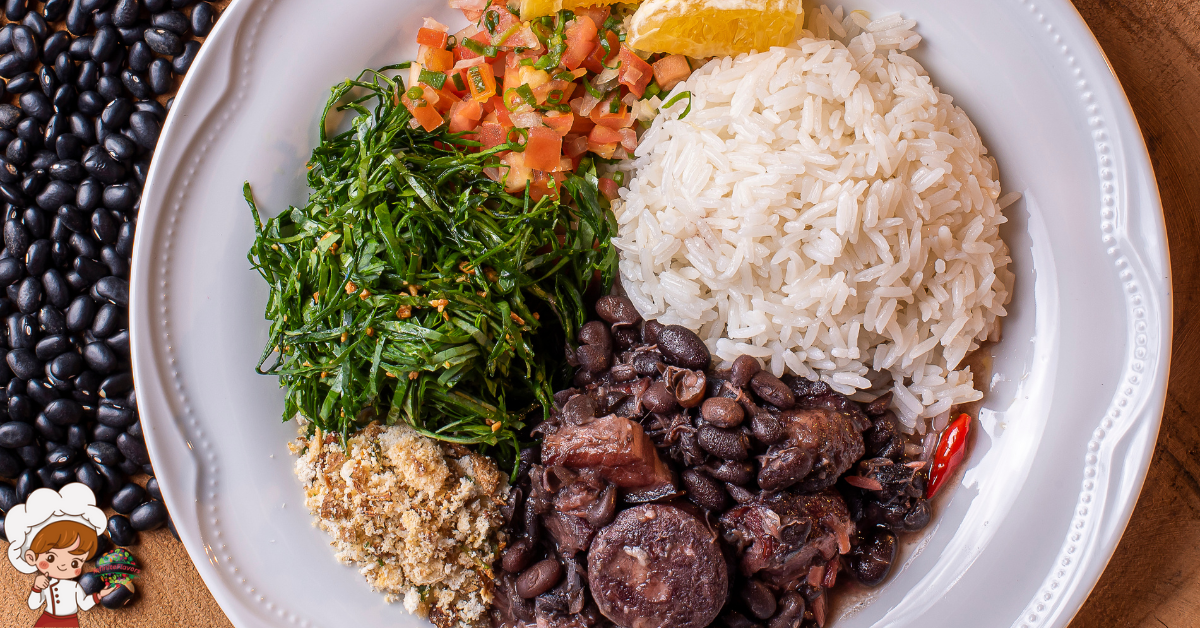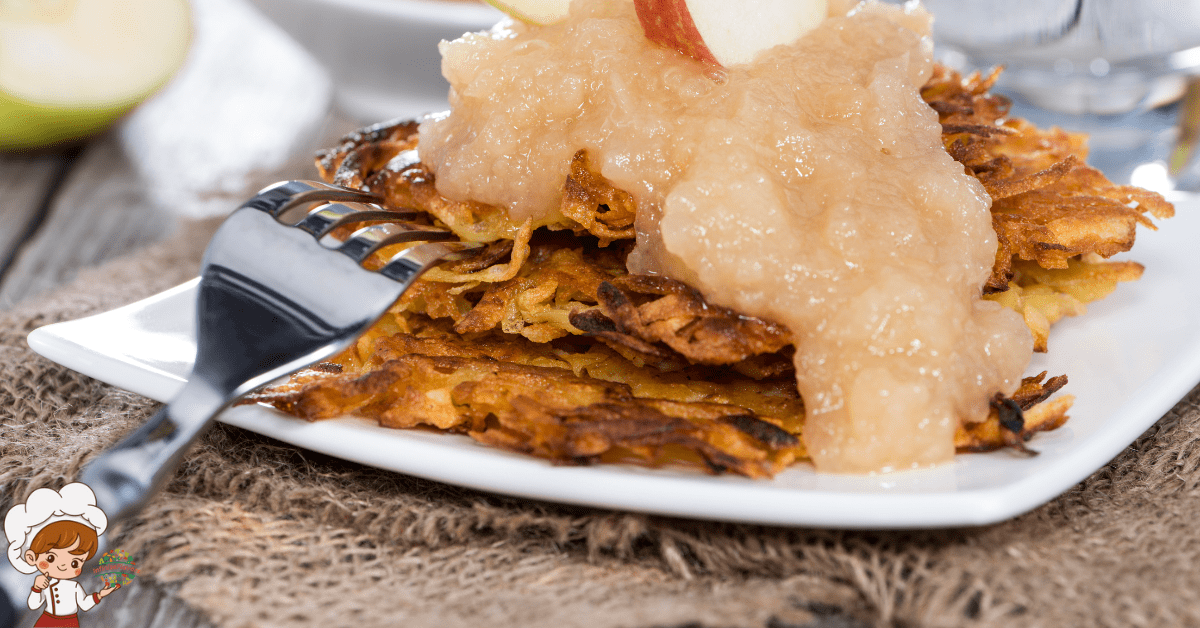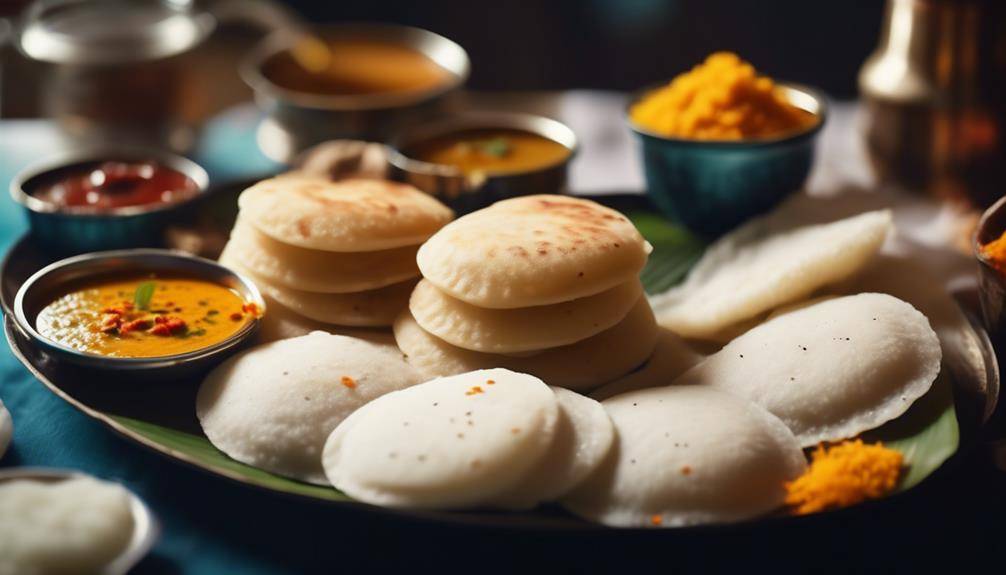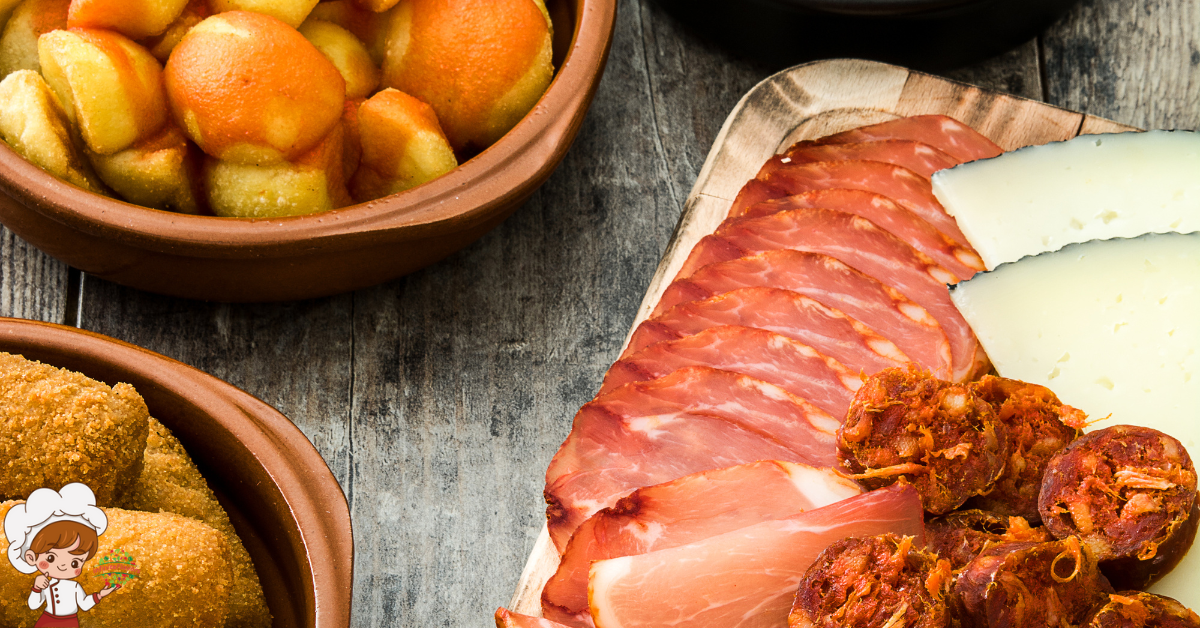The Best Lebanese Vegetarian Dishes
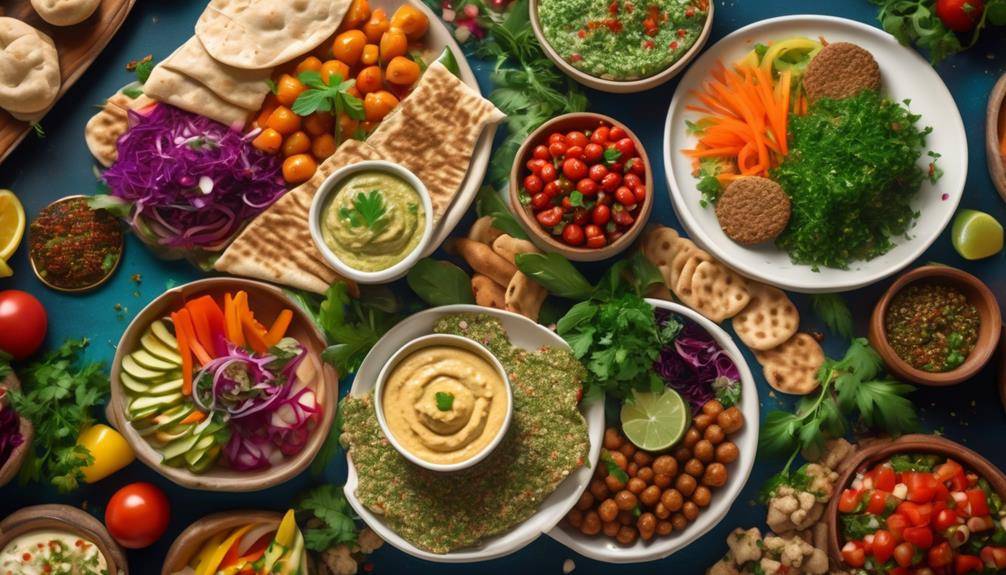
If you think that Lebanese cuisine is all about succulent grilled meats and savory kebabs, think again. The Best Lebanese Vegetarian Dishes offer a delightful and unexpected twist to your taste buds. From vibrant herb salads to creamy eggplant dips and crispy chickpea fritters,From vibrant herb salads to creamy eggplant dips and crispy chickpea fritters, Lebanese cuisine has a wide array of vegetarian options that will leave you craving for more. So, why limit yourself to the usual suspects when you can explore the incredible world of Lebanese vegetarian delights?
Tabbouleh: A Refreshing Herb and Bulgar Salad
Get ready to experience the refreshing flavors of Tabbouleh, a vibrant herb and bulgar salad that will awaken your taste buds and leave you craving for more. Tabbouleh is a classic Lebanese dish that is not only delicious but also packed with nutrients. Traditionally, it is made with parsley, mint, tomatoes, onions, bulgar wheat, lemon juice, and olive oil. However, there are many variations of this salad that you can try to suit your taste preferences.
One popular variation is the addition of cucumbers, which adds a refreshing crunch to the salad. You can also experiment with different herbs like cilantro or dill to give it a unique twist. Another variation is the use of quinoa instead of bulgar wheat, making it a gluten-free option. This version of Tabbouleh is equally delicious and nutritious.
When it comes to serving Tabbouleh, there are endless possibilities. It can be enjoyed as a side dish with grilled meats or as a light and refreshing main course. You can serve it in lettuce wraps for a low-carb option or alongside falafel and hummus for a complete vegetarian meal. Tabbouleh also pairs well with grilled vegetables or as a topping for pita bread or crackers.
Fattoush: Crunchy Salad With Pita Bread and Sumac Dressing
Are you ready to tantalize your taste buds with a traditional Lebanese dish that’s both crunchy and refreshing? Fattoush is a delightful salad made with crispy pita bread, fresh vegetables, and a tangy sumac dressing. Not only is this dish bursting with flavors and textures, but it also offers numerous health benefits, thanks to its nutritious ingredients. From aiding digestion to boosting immunity, Fattoush is a perfect addition to your vegetarian repertoire. And the best part? You can customize it with your favorite veggies and herbs for a unique twist on this classic dish.
Traditional Fattoush Recipe
Indulge in the irresistible flavors of a traditional Fattoush recipe, a delightful combination of crunchy salad, crispy pita bread, and tangy sumac dressing. Fattoush, a Lebanese salad, not only tantalizes your taste buds but also offers numerous health benefits. Packed with fresh vegetables like lettuce, tomatoes, cucumbers, and radishes, this dish is a powerhouse of vitamins, minerals, and fiber.
The addition of sumac, a tangy spice, not only enhances the flavor but also provides antioxidants and anti-inflammatory properties. Fattoush can be customized to suit your taste preferences, with variations including the addition of grilled halloumi cheese, boiled chickpeas, or even grilled chicken for added protein. You can also experiment with different dressings, such as lemon-tahini or pomegranate-molasses. So dive into a bowl of Fattoush and enjoy a burst of freshness and flavor while reaping its many health benefits.
Health Benefits of Fattoush
Experience the multitude of health benefits that come with indulging in a bowl of Fattoush, a delightful Lebanese salad packed with fresh vegetables, crispy pita bread, and a tangy sumac dressing. One of the key ingredients in Fattoush is sumac, which offers several benefits when included in your diet. Sumac is rich in antioxidants, which help protect your cells from damage caused by free radicals. It also has anti-inflammatory properties that can reduce inflammation in the body.
Additionally, sumac is known to aid digestion and improve blood circulation. To make a healthy version of fattoush at home, use whole wheat pita bread instead of white, and opt for olive oil in the dressing instead of mayonnaise. Load up on colorful vegetables like cucumbers, tomatoes, and radishes for added nutrients. Enjoy this delicious salad while reaping its numerous health benefits.
Variations of Fattoush
Discover the exciting array of variations that can be created with Fattoush, a delightful Lebanese salad boasting a crunchy blend of pita bread, fresh vegetables, and a tangy sumac dressing. Take your traditional fattoush recipe to new heights by adding unique ingredients and flavors. Here are some ideas to get you started:
- Protein-packed twists:
- Toss in some grilled tofu or chickpeas for a heartier version of fattoush.
- Sprinkle crumbled feta cheese or grilled halloumi on top to add a creamy and salty element.
- Creative vegetable combinations:
- Swap out the usual romaine lettuce for baby spinach or arugula to add a peppery kick.
- Experiment with different veggies like roasted beets, grilled eggplant, or sliced radishes for added texture and flavor.
Baba Ghanoush: Creamy Roasted Eggplant Dip
Are you looking for a creamy and flavorful dip to add to your Lebanese vegetarian spread? Look no further than baba ghanoush! This roasted eggplant dip is not only delicious but also packed with health benefits. From its rich source of vitamins and minerals to its high fiber content, baba ghanoush is a nutritious addition to any meal. Plus, with its versatility, you can enjoy it as a dip, a spread, or even as a topping for your favorite dishes. So, let’s explore the health benefits, variations, and serving suggestions of this creamy delight!
Health Benefits of Baba Ghanoush
Baba Ghanoush, a creamy roasted eggplant dip, offers a multitude of health benefits that make it a delicious and nutritious addition to any meal. This delectable dish has a rich history and cultural significance in Lebanese cuisine.
The health benefits of Baba Ghanoush include:
- Heart-Healthy: Baba Ghanoush is low in saturated fat and cholesterol, making it a heart-healthy option. The eggplant used in this dip is rich in antioxidants and fiber, which can help lower blood pressure and reduce the risk of heart disease.
- Digestive Health: The fiber content in Baba Ghanoush aids in digestion by promoting regular bowel movements and preventing constipation. Additionally, eggplants are known for their natural detoxifying properties, which can help cleanse the digestive system.
Variations and Serving Suggestions
For a delightful twist on the classic Baba Ghanoush, consider exploring various variations and serving suggestions that will elevate your enjoyment of this creamy roasted eggplant dip. There are several ways to add your own personal touch to this Lebanese vegetarian dish. One variation you can try is adding roasted red peppers to the traditional recipe, giving the dip a hint of sweetness and a vibrant color.
Another option is to incorporate different spices like cumin or paprika to enhance the flavor profile. When it comes to serving, you can get creative with the presentation. Try arranging the dip in a hollowed-out bell pepper or serving it in a colorful bowl surrounded by an assortment of fresh vegetables and pita bread. These variations and presentation ideas will not only add visual appeal to your Baba Ghanoush but also elevate the taste and experience of this classic Lebanese dish.
Falafel: Crispy Chickpea Fritters With Aromatic Spices
Crispy and flavorful, falafel is a beloved Lebanese vegetarian dish made from chickpeas and aromatic spices. These crispy chickpea fritters are a staple in Lebanese cuisine and are enjoyed by vegetarians and non-vegetarians alike. The combination of chickpeas, herbs, and spices gives falafel its distinct taste and texture. Here are some key points to know about falafel variations and falafel accompaniments:
- Falafel variations:
- Traditional falafel: This is the classic version made from ground chickpeas or fava beans mixed with onions, garlic, parsley, coriander, cumin, and other aromatic spices. It is then shaped into small balls or patties and deep-fried until golden brown.
- Herbed falafel: This variation incorporates a blend of fresh herbs like mint, cilantro, and dill into the falafel mixture, adding a refreshing flavor to the fritters.
- Falafel accompaniments:
- Tzatziki sauce: This creamy yogurt-based sauce flavored with garlic, cucumber, and lemon complements the crispy falafel perfectly. It adds a cool and tangy element to the dish.
- Tahini sauce: Made from ground sesame seeds, tahini sauce is thick and nutty, providing a rich and creamy contrast to the crispy falafel. It is often drizzled on top or used as a dipping sauce.
Falafel is versatile and can be enjoyed in various ways. It can be served as a filling in pita bread with fresh vegetables and sauces, or as part of a mezze platter alongside hummus, tabbouleh, and other Middle Eastern dips and salads. Whether you prefer the traditional version or a more herb-infused falafel, one thing is for sure – each bite is a burst of flavors and textures that will leave you wanting more.
Hummus: Creamy Chickpea and Tahini Dip
Get ready to discover the incredible nutritional benefits of hummus, along with the various variations and toppings that can take this creamy chickpea and tahini dip to the next level. Whether you’re a fan of classic hummus or interested in experimenting with different flavors, there’s no shortage of options to suit every palate. Plus, we’ll share some creative serving suggestions that will elevate your hummus experience and impress your guests. So, grab your pita bread and get ready to embark on a delicious hummus journey!
Nutritional Benefits of Hummus
Hummus, the creamy and flavorful chickpea and tahini dip, is not only a delicious addition to any meal, but it also offers numerous nutritional benefits. Here are some reasons why hummus should be a staple in your diet:
- High in protein: Chickpeas, the main ingredient in hummus, are packed with plant-based protein, making it an excellent option for vegetarians and vegans.
- Rich in fiber: Hummus contains a good amount of dietary fiber, which aids in digestion and helps maintain a healthy weight.
- Healthy fats: Tahini, another key ingredient in hummus, provides a dose of heart-healthy fats that can help reduce bad cholesterol levels.
- Vitamins and minerals: Hummus is a good source of vitamins and minerals, such as iron, folate, and vitamin B6.
Now that you know the nutritional benefits of hummus, it’s time to explore ways to incorporate it into your everyday meals. Spread it on sandwiches, use it as a dip for fresh vegetables, or even mix it into pasta and salads for added flavor and nutrition. The possibilities are endless!
Variations and Toppings for Hummus
With the nutritional benefits of hummus in mind, it’s time to explore the endless possibilities of variations and toppings that can elevate this creamy chickpea and tahini dip to new levels of flavor and excitement. When it comes to variations for hummus, the options are abundant. You can experiment with different ingredients to create unique flavors that suit your taste buds.
For example, you can add roasted red peppers for a smoky and slightly sweet taste or incorporate sun-dried tomatoes for a tangy and savory twist. Another variation is to mix in herbs like cilantro or parsley for a refreshing and aromatic hummus. Now, let’s move on to creative hummus toppings. Think beyond the traditional drizzle of olive oil and sprinkle of paprika.
Consider adding toppings like toasted pine nuts for a crunchy texture, crumbled feta cheese for a creamy and salty touch, or even diced cucumbers and tomatoes for a fresh and vibrant finish. The possibilities are truly endless when it comes to variations and toppings for hummus, so don’t be afraid to get creative and let your taste buds guide you.
Serving Suggestions for Hummus
Enhance your hummus experience with a variety of serving suggestions that will take this creamy chickpea and tahini dip to new heights of deliciousness. Whether you’re looking to spice up your appetizers or add a twist to your main dishes, hummus can be used in creative ways to elevate your meals. Here are some ideas to get you started:
- Dipping Delights: Serve hummus with an assortment of fresh vegetables, pita bread, or tortilla chips for a colorful and healthy snack.
- Pair with carrot sticks, cucumber slices, and cherry tomatoes for a refreshing option.
- Try it with warm pita bread, toasted pita chips, or even crispy tortilla chips for added crunch.
- Recipe Revolution: Use hummus as a flavorful base or a creamy topping for your favorite dishes.
- Spread a layer of hummus on your sandwiches or wraps for an extra kick of flavor.
- Use it as a creamy sauce for pasta, roasted vegetables, or grilled meats for a unique twist.
Get creative with different variations of hummus and explore the endless possibilities of incorporating it into your recipes. Whether you’re hosting a party or simply enjoying a meal at home, these serving suggestions will surely impress your taste buds.
Mujadara: Comforting Lentil and Rice Pilaf
Mujadara, a comforting lentil and rice pilaf, is a staple in Lebanese cuisine that will leave you craving for more. This delicious dish is made with simple ingredients like lentils, rice, and caramelized onions, but the flavors are anything but ordinary. The combination of earthy lentils and fluffy rice creates a hearty and satisfying base, while the sweet and savory caramelized onions add a depth of flavor that takes this dish to the next level.
There are many variations of mujadara, but the basic recipe remains the same. To make this dish, start by cooking the lentils until they are tender and then combine them with cooked rice. The lentils and rice are cooked separately to ensure that each grain is perfectly cooked and retains its individual texture. Once the lentils and rice are cooked, they are combined and topped with a generous amount of caramelized onions.
The caramelized onions are what truly make this dish shine. They are slowly cooked until they become golden brown and develop a rich, sweet flavor. The onions are then mixed into the lentil and rice mixture, infusing every bite with their irresistible taste.
Mujadara can be enjoyed on its own as a filling vegetarian main dish, or it can be served as a side dish alongside other Lebanese favorites. It pairs well with tangy yogurt, fresh herbs, and a squeeze of lemon juice. Whether you are a vegetarian or simply looking to expand your culinary horizons, mujadara is a must-try dish that will leave you wanting more.
Stuffed Grape Leaves: Tangy and Savory Vegetarian Rolls
Now let’s turn our attention to Stuffed Grape Leaves, a tangy and savory vegetarian delight that will tantalize your taste buds. These delicious rolls are made by wrapping tender grape leaves around a flavorful filling, creating a dish that is both visually appealing and bursting with flavor.
- Taste and texture of stuffed grape leaves:
- The taste of stuffed grape leaves is a delightful combination of tangy and savory flavors. The grape leaves themselves have a slightly bitter taste, which is balanced by the savory filling inside. The filling is usually made from a mixture of rice, herbs, and spices, creating a fragrant and flavorful blend. When cooked, the grape leaves become tender and slightly chewy, adding a pleasant texture to each bite.
- Different variations of stuffed grape leaves:
- While the traditional Lebanese version of stuffed grape leaves is made with a rice-based filling, there are many variations of this dish found throughout the Middle East and Mediterranean. Some variations include adding ingredients like minced meat, pine nuts, or raisins to the filling for added texture and flavor. In some regions, the grape leaves are steamed or baked, while in others they are cooked in a tangy lemony sauce. Each variation brings its own unique twist to this classic dish, offering a wide range of flavors and textures to explore.
Stuffed Grape Leaves are a versatile dish that can be served as an appetizer, a side dish, or even a main course. Whether you enjoy them warm or at room temperature, these tangy and savory rolls are sure to be a hit at your next gathering. So why not give them a try and experience the delightful taste and texture of stuffed grape leaves for yourself?
Fatayer: Flaky Pastries Filled With Spinach and Cheese
Indulge in the delectable flavors of Fatayer, flaky pastries filled with a delightful combination of spinach and cheese. Fatayer is a popular Lebanese dish that is enjoyed by vegetarians and non-vegetarians alike. The pastry is made from a thin, flaky dough that is filled with a savory mixture of spinach and cheese. The combination of the crispy pastry and the rich, creamy filling is simply irresistible.
One of the great things about Fatayer is the variety of flavors and fillings that can be used. While spinach and cheese is a classic combination, there are many other variations to explore. Some people like to add herbs and spices to the filling, such as parsley, mint, or sumac, to enhance the flavor even more. Others like to add onions or garlic for an extra kick.
Aside from being incredibly delicious, Fatayer also offers several health benefits. Spinach, the main ingredient in this dish, is packed with nutrients. It is a great source of vitamins A, C, and K, as well as iron and calcium. Spinach is also low in calories and carbohydrates, making it a great choice for those watching their weight or managing their blood sugar levels.
Cheese, another key component of Fatayer, provides protein and calcium. Protein is essential for building and repairing tissues, while calcium is important for maintaining strong bones and teeth. However, it is worth noting that some types of cheese can be high in saturated fats, so it is best to choose a low-fat or reduced-fat option.
Manakish: Lebanese Flatbread Topped With Za’atar and Olive Oil
Savor the taste of Manakish, a traditional Lebanese flatbread generously topped with a blend of aromatic za’atar and drizzled with fragrant olive oil. Manakish is a popular Lebanese flatbread that is both delicious and versatile. It is a staple in Lebanese cuisine, known for its regional specialties, traditional ingredients, and cooking techniques influenced by Middle Eastern and Mediterranean flavors.
Here are some key points about Manakish:
- Traditional Toppings and Variations:
- Za’atar: The most common topping for Manakish is za’atar, a mixture of dried thyme, sesame seeds, sumac, and salt. This blend of herbs and spices gives the flatbread a unique and savory flavor.
- Olive Oil: Another essential component of Manakish is the drizzle of fragrant olive oil, which adds richness and enhances the overall taste.
- Cheese: Manakish can also be topped with a variety of cheeses, such as akkawi, halloumi, or feta, which adds a creamy and salty element to the dish.
- Vegetable Fillings: Some variations of Manakish include toppings like sliced tomatoes, onions, or olives, providing a burst of freshness and texture.
- History and Cultural Significance:
- Manakish has a long history in Lebanon, dating back centuries. It has been passed down through generations, becoming a beloved traditional dish.
- In Lebanese culture, Manakish is often enjoyed as a breakfast or a snack, and it is commonly found in bakeries and street food stalls.
- It is also a popular choice during special occasions and celebrations, symbolizing the rich culinary heritage of Lebanon.
Manakish is a delightful combination of flavors and textures that showcases the essence of Lebanese cuisine. Whether you prefer the classic za’atar and olive oil topping or want to experiment with different ingredients, this versatile flatbread is sure to please your taste buds. Embrace the cultural significance of Manakish and indulge in this mouthwatering Lebanese specialty.
Tawa: Spiced Vegetable Medley With Tomato Sauce
Get ready to tantalize your taste buds with the flavorful vegetable medley of Tawa, a Lebanese dish that will surely satisfy your cravings. This spiced vegetable medley is cooked to perfection and topped with a tangy tomato sauce that adds a delightful kick to every bite. With its vibrant colors and aromatic spices, Tawa is a must-try dish for any vegetarian food lover.
Flavorful Vegetable Medley
For a delightful and satisfying meal, try the Flavorful Vegetable Medley, a tantalizing combination of spiced vegetables cooked in a rich tomato sauce. This Lebanese dish is a perfect choice for vegetarians and veggie-lovers alike. The Flavorful Vegetable Medley is a versatile dish that can be enjoyed on its own or served as a side dish to complement other Lebanese delicacies.
Here are two ways to enjoy this mouthwatering medley:
- Vegetable Stir Fry:
- Start by sautéing an array of colorful vegetables such as bell peppers, zucchini, and mushrooms in olive oil.
- Add a burst of flavor with spices like cumin, paprika, and turmeric.
- Toss in some garlic and ginger for an added kick.
- Finish off with a generous amount of the rich tomato sauce, allowing the flavors to meld together beautifully.
- Roasted Root Vegetables:
- Preheat your oven and roast a medley of root vegetables like carrots, sweet potatoes, and parsnips until they are tender and slightly caramelized.
- In a separate pan, prepare the tomato sauce by sautéing onions, garlic, and tomatoes.
- Add the roasted vegetables to the sauce and let them simmer together, allowing the flavors to blend harmoniously.
Whether you choose the vegetable stir fry or roasted root vegetables variation, the Flavorful Vegetable Medley is sure to satisfy your taste buds and leave you wanting more.
Tangy Tomato Sauce
To create the tangy tomato sauce for the Tawa: Spiced Vegetable Medley, follow these simple steps to infuse your dish with a burst of flavor. Lebanese cuisine offers different ways to use tangy tomato sauce, adding a zesty touch to various dishes. One creative way to incorporate this sauce into vegetarian dishes is by using it as a base for a hearty vegetable stew.
Simply sauté your favorite vegetables in olive oil, then add the tangy tomato sauce and simmer until the flavors meld together. Another option is to use the sauce as a topping for grilled eggplant or zucchini. The acidity of the tomatoes complements the smoky flavor of the grilled vegetables perfectly. Don’t be afraid to experiment and discover new ways to enjoy the tangy tomato sauce in Lebanese vegetarian cuisine.
Batata Harra: Spicy Roasted Potatoes With Garlic and Coriander
Spice up your taste buds with the tantalizing flavors of Batata Harra, a Lebanese dish that features spicy roasted potatoes infused with the aromatic blend of garlic and coriander. This Middle Eastern potato dish is a perfect choice for those who enjoy spicy potato recipes. Batata Harra is not only delicious but also easy to make, making it a great addition to your vegetarian repertoire.
Here are some key points about Batata Harra:
- Flavorful Spice: The star of this dish is the spicy seasoning blend that coats the roasted potatoes. The combination of garlic, coriander, and red pepper flakes creates a flavorful kick that will awaken your taste buds.
- Crispy Texture: The potatoes are roasted to perfection, resulting in a crispy exterior and a soft, fluffy interior. This contrast in textures adds depth to the dish and makes it incredibly satisfying to bite into.
- Versatile Dish: Batata Harra can be enjoyed as a side dish or as a main course. It pairs well with a variety of other Lebanese dishes, such as hummus, tabbouleh, or falafel. You can also serve it with a fresh salad or pita bread for a complete and wholesome meal.
- Health Benefits: Potatoes are a good source of vitamins, minerals, and fiber. They are also naturally gluten-free and low in fat. By roasting them instead of frying, you can enjoy the health benefits of potatoes without adding unnecessary calories.
- Cultural Significance: Batata Harra is a popular dish in Lebanese cuisine and is often served during festive occasions or as part of a mezze spread. It represents the rich culinary heritage of the region and showcases the bold flavors and spices that are characteristic of Middle Eastern cooking.
Shanklish: Aged Cheese Salad With Tomatoes and Herbs
Continue your culinary journey through Lebanese vegetarian cuisine with the tantalizing flavors of Shanklish: Aged Cheese Salad With Tomatoes and Herbs. This dish combines the rich and tangy taste of aged cheese with the freshness of tomatoes and the aromatic blend of herbs. Shanklish is a traditional Lebanese cheese that is typically made from sheep’s or cow’s milk. However, if you are looking for cheese alternatives, you can also use feta or goat cheese to achieve a similar flavor profile.
The star of this dish is undoubtedly the shanklish cheese. It is a semi-hard cheese that is aged for several months, resulting in a crumbly texture and a sharp, salty taste. When combined with the juicy sweetness of ripe tomatoes and the fragrant herbs like parsley, mint, and oregano, the flavors truly come alive. The salad is then dressed with a simple yet flavorful dressing made from olive oil, lemon juice, and a touch of garlic.
If you are a fan of Mediterranean cuisine, you will be pleased to know that shanklish pairs well with a variety of other cheeses. Consider exploring Mediterranean cheese pairings by serving shanklish alongside halloumi, labneh, or even a creamy brie. The combination of different textures and flavors will elevate your dining experience and add a touch of sophistication to your meal.
Whether you are a vegetarian or simply looking for a refreshing and light dish, Shanklish: Aged Cheese Salad With Tomatoes and Herbs is a fantastic choice. Its simplicity and vibrant flavors make it a versatile option that can be enjoyed as a side dish or a main course. So, why not try this Lebanese delicacy and embark on a culinary adventure that will leave your taste buds craving for more?
Moutabal: Smoky Grilled Eggplant Dip With Garlic and Lemon
Indulge in the smoky and flavorful delight of Moutabal: Smoky Grilled Eggplant Dip With Garlic and Lemon. Moutabal, also known as Baba Ganoush, is a popular Lebanese appetizer that is loved for its rich and smoky flavor. Made with grilled eggplant, garlic, lemon juice, tahini, and olive oil, this dip is a staple in Lebanese cuisine.
Moutabal offers a variety of variations and serving suggestions, making it a versatile dish that can be customized to suit different tastes. Some variations include adding chopped tomatoes, parsley, or pomegranate seeds for an extra burst of freshness and flavor. It can be served as a dip with warm pita bread or as a side dish alongside grilled meats and vegetables. Moutabal also pairs well with falafel, hummus, and tabbouleh, creating a delectable combination of flavors.
Apart from its delicious taste, Moutabal also offers several health benefits and nutritional value. Eggplants, the main ingredient in Moutabal, are low in calories and high in fiber, making them a great addition to any diet. They are also a good source of vitamins and minerals, including potassium, manganese, and folate. Garlic, another key ingredient, is known for its antibacterial and antiviral properties, and it may also help lower blood pressure and cholesterol levels.
Moghrabieh: Pearl Couscous With Chickpeas and Vegetables
Bring the hearty flavors of the Middle East to your table with Moghrabieh: Pearl Couscous With Chickpeas and Vegetables. Moghrabieh is a traditional Lebanese dish that combines the nutty flavors of pearl couscous with the creaminess of chickpeas and a variety of colorful vegetables. This dish is not only delicious but also packed with health benefits.
Moghrabieh variations allow you to customize this dish to your taste preferences. You can add a variety of vegetables such as carrots, zucchini, and bell peppers to make it more nutritious and flavorful. Some variations even include adding spices like cumin and turmeric to enhance the taste. You can also make it more protein-rich by adding grilled chicken or tofu.
One of the main health benefits of moghrabieh is its high fiber content. The pearl couscous and chickpeas provide a good amount of dietary fiber, which aids in digestion and helps maintain a healthy weight. Additionally, chickpeas are a great source of plant-based protein, making this dish a satisfying and nutritious option for vegetarians and vegans.
Moghrabieh is also rich in vitamins and minerals. The combination of vegetables adds vitamins A and C, as well as potassium and magnesium. These nutrients are essential for maintaining a strong immune system, promoting healthy skin, and supporting overall well-being.
Riz Bi Haleeb: Creamy Rice Pudding With Aromatic Rose Water
To create a delectable Lebanese dessert that will transport you to the streets of Beirut, try making Riz Bi Haleeb: a creamy rice pudding infused with the aromatic essence of rose water. This traditional Middle Eastern rice dish is a delightful way to end a meal or satisfy your sweet tooth. The combination of creamy rice, fragrant rose water, and subtle spices creates a unique and enticing flavor that is sure to impress your taste buds.
Here are a few reasons why Riz Bi Haleeb is a must-try dessert:
- Creamy texture: The rice is cooked slowly in milk, allowing it to absorb all the flavors and become beautifully creamy. The result is a silky smooth pudding that melts in your mouth.
- Aromatic rose water: The addition of rose water gives this dessert a distinct Middle Eastern flavor. Its floral notes add a refreshing touch to the creamy rice pudding, elevating it to a whole new level.
- Versatility: Riz Bi Haleeb can be enjoyed warm or chilled, making it a versatile dessert for any occasion. Whether you serve it as a comforting winter treat or a refreshing summer dessert, it never fails to impress.
- Simple ingredients: This dessert requires only a handful of ingredients that are easily accessible. With just rice, milk, sugar, rose water, and a few spices, you can create a dessert that is rich in flavor and texture.
Indulge in the heavenly combination of rose water and creamy rice with Riz Bi Haleeb. This dessert is a true gem of Lebanese cuisine and will leave you wanting more. So, why not give it a try and experience the magic of Middle Eastern rice dishes in your own kitchen?
The Best Lebanese Vegetarian Dishes; Frequently Asked Questions
Are All Lebanese Vegetarian Dishes Spicy?
Not all Lebanese vegetarian dishes are spicy. Lebanese cuisine is known for its diverse flavors and spices, but there are many non-spicy options available. You can enjoy a variety of delicious and flavorful vegetarian dishes without the heat.
Can I Substitute Bulgur With Another Grain in Tabbouleh?
Yes, you can substitute bulgur with another grain in tabbouleh. Quinoa, couscous, or even rice can be used as alternatives. Experiment with different grains to create unique variations of this refreshing Lebanese salad.
What Are the Main Ingredients in Fattoush Salad?
In fattoush salad, the main ingredients are fresh vegetables like lettuce, tomatoes, cucumbers, and radishes, along with crispy pita bread and a tangy dressing. Variations of fattoush may include additional herbs or spices for extra flavor.
Is Baba Ghanoush Typically Served Hot or Cold?
Baba ghanoush can be served hot or cold. It’s a delicious dip made from roasted eggplant, tahini, garlic, lemon juice, and olive oil. It’s not only tasty, but also has health benefits like being high in fiber and antioxidants. Different cuisines have their own variations of this dish.
How Long Does It Take to Cook Mujadara?
To make mujadara flavorful, you can add caramelized onions, spices like cumin and coriander, and a squeeze of lemon juice. There are different variations of mujadara, some include lentils, others use bulgur or rice.
Conclusion
Lebanese vegetarian cuisine offers a delightful array of dishes that are both flavorful and nutritious. From the refreshing Tabbouleh salad, bursting with herbs and bulgur, to the creamy Baba Ghanoush dip made from roasted eggplant, these dishes are sure to tantalize your taste buds. Don’t forget to try the crispy Falafel fritters, the creamy Hummus dip, and the smoky Moutabal dip for a truly satisfying dining experience. With such a variety of delicious options, Lebanese vegetarian cuisine is a must-try for any food lover.




